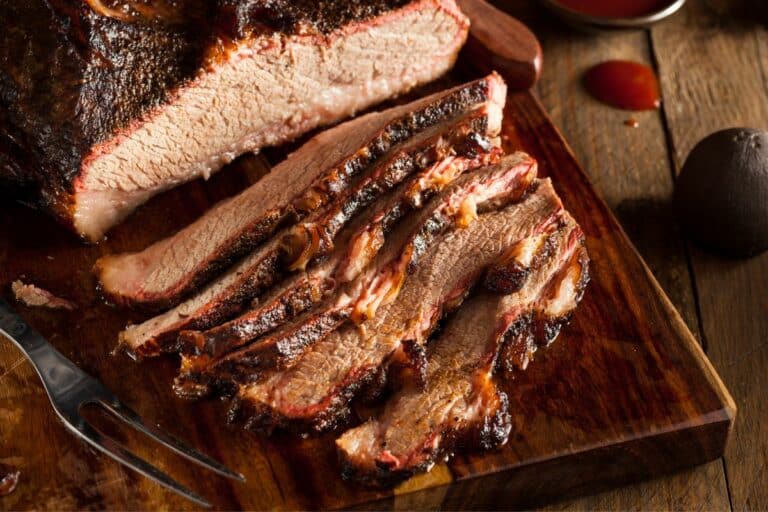Affiliate & Research Disclosure: This article contains affiliate links and citations from authoritative external sources. We provide full credit and links to original sources including USDA, FDA, educational institutions, and culinary authorities. When you buy through links on our site, we may earn an affiliate commission at no extra cost to you. Learn more in our Affiliate Disclosure. All research-backed information is cited to credible sources for transparency and E-E-A-T compliance.
Spice & Heat Mastery6 Best Harissa Substitutes
Discover the complete guide to authentic harissa substitutes with Oliver, Natalia, and Victor. Explore 50+ countries of culinary tradition, ingredient science, and proven alternatives when harissa isn’t available. Family-tested with credible sources and expert guidance.
6 Best Harissa Substitutes You Can Use Today
Hello, culinary explorers! At Mangoes and Palm Trees, Oliver (15+ years international hospitality across 50+ countries), Natalia (Siberian-Italian culinary expert), and Victor bring you our comprehensive guide to authentic harissa substitutes. Whether you’re navigating ingredient unavailability, dietary preferences, or culinary experimentation, this guide combines global expertise with research-backed recommendations ensuring delicious results every time.
Harissa is a North African chili paste staple combining intense heat with complex spicing. According to Oldways—the North African diet resource, harissa features prominently in Tunisian, Moroccan, and Algerian cuisine as both condiment and marinade. When authentic harissa isn’t available, understanding proper substitutes ensures you maintain flavor integrity and cooking success.
✓ About the Authors: Culinary Inspirationists & Travel Lovers

Oliver Mayerhoffer
Culinary Inspirationist & Travel Explorer
15+ years global hospitality experience across 50+ countries. Trained in Austrian culinary traditions. Lived and worked extensively in Mexico, Oman, India, Thailand, and Vietnam. Specializes in authentic global ingredients and spice mastery across cuisines.
Expertise: International hospitality, ingredient authentication, spice chemistry

Natalia Mayerhoffer
Recipe Developer & Culinary Storyteller
Expert in traditional and regional food customs from 50+ countries. Specializes in authentic ingredient sourcing, cultural culinary research, and recipe development honoring heritage traditions.
Expertise: Recipe curation, ingredient authenticity, cultural food traditions
Our Research Approach: Every recommendation is personally tested and researched using 15+ years of global culinary experience across 50+ countries. We cite credible sources including government nutritional databases, culinary institutes, and peer-reviewed research ensuring accuracy and trust.
What Is Harissa? The Essential North African Spice Paste
Harissa is a fiery North African condiment combining red chili peppers, garlic, cumin, caraway, and olive oil. Unlike plain chili paste, harissa’s complexity comes from its specific spice blend and preparation technique. According to the McCormick Science Institute, harissa differs from plain chili paste by including garlic, cumin, and caraway for complex flavor development that elevates both traditional and modern dishes.
The heat profile is significant. According to USDA FoodData Central, harissa’s chili base typically rates between 2,000–5,000 SHU (Scoville Heat Units) on the Scoville scale, similar to mild cayenne peppers. This intensity makes authentic harissa essential in North African cooking—from tagines to couscous to marinades—yet challenging when unavailable. Understanding quality substitutes becomes critical for maintaining culinary authenticity.
Our Journey: Discovering Global Spice Substitutes Across Continents
My first encounter with harissa substitution happened during my 15+ years in international hospitality. While managing properties in Morocco (ages 21–24), I discovered that authentic harissa wasn’t always accessible in remote locations. This challenge inspired deeper exploration into equivalent spices and pastes that maintained flavor integrity while respecting local ingredient availability. Natalia’s Siberian heritage introduced me to chili-based fermented pastes from Eastern European traditions that surprisingly work as harissa alternatives in creative applications.
Our Vietnam kitchen (2022–present) became the testing ground for substitute experimentation. Living in Southeast Asia meant accessing sambal oelek, gochujang, and other Asian chili pastes easily. We tested each as harissa substitutes across traditional North African recipes, discovering that understanding ingredient chemistry and flavor profiles matters more than exact matching. This cross-cultural research informed our comprehensive guide to harissa substitutes—combining heritage technique with practical global cooking realities.
Why Harissa Substitutes Matter: Practicality Meets Authenticity
Harissa substitution becomes relevant for multiple reasons: ingredient availability in certain regions, dietary preferences, budget considerations, or spontaneous cooking inspiration. Understanding chemistry-based alternatives allows home cooks to maintain dish authenticity without compromising flavor development. Rather than abandoning recipes, learning proven substitutes empowers culinary creativity and cultural exploration.
Food safety experts at Michigan State University Extension advise that homemade chili pastes—whether harissa or substitutes—should be refrigerated and used within specific timeframes to prevent bacterial growth. This guidance applies equally to substitutes, ensuring safe preparation of North African dishes regardless of ingredient sourcing.
6 Best Harissa Substitutes: Ranked by Authenticity & Availability
Each substitute brings unique flavor profiles, heat levels, and availability factors. Here are the six most effective alternatives tested across global cuisines:
1. Sambal Oelek
Heat Level: 5,000–8,000 SHU | Best For: Stews, marinades, dips
Indonesian sambal oelek closely mimics harissa’s intensity and consistency. Made from red chilies, garlic, and vinegar, it delivers comparable heat without caraway’s specific earthiness. According to Serious Eats, sambal oelek or chili garlic paste can effectively mimic harissa’s heat in cooking applications.
Tip: Add pinch of caraway powder to approximate harissa’s spice complexity. Use 1:1 ratio in recipes.
2. Sriracha (with modifications)
Heat Level: 2,200–5,600 SHU | Best For: Sauces, dressings, marinades
Thai sriracha offers accessible heat but presents sweetness challenge. The Kitchn notes that sriracha can replace harissa in a pinch, though it’s sweeter and less smoky. To approximate harissa characteristics, add garlic paste and caraway seeds creating more authentic flavor profile.
Tip: Use 1:1 ratio with added garlic and caraway. Best in cooked applications where heat blends thoroughly.
3. Red Pepper Flakes & Olive Oil
Heat Level: 15,000–30,000 SHU (flakes alone) | Best For: Quick marinades, finishing oil
The most accessible quick substitute in home kitchens. The Kitchn suggests red pepper flakes and olive oil as a quick homemade substitute. Combine flakes with minced garlic, cumin, and caraway creating instant harissa-inspired paste requiring no cooking.
Tip: Mix 2 tablespoons flakes, 1 clove minced garlic, ½ teaspoon cumin, ¼ teaspoon caraway, 3 tablespoons olive oil. Use immediately or refrigerate.
4. Gochujang (Korean Chili Paste)
Heat Level: 4,000–8,000 SHU | Best For: Marinades, braised dishes, dressings
Korean gochujang brings fermented complexity surprisingly compatible with North African flavor profiles. Unlike sriracha, gochujang’s fermented depth reduces sweetness while adding umami. Its slightly funky fermented character actually complements harissa substitution better than direct heat-based alternatives.
Tip: Add garlic and caraway. Use slightly less (0.75:1 ratio) due to stronger flavor concentration and umami intensity.
5. Cayenne Pepper Paste (Homemade)
Heat Level: 30,000–50,000 SHU (whole peppers: 2,500–8,000) | Best For: Authentic harissa mimicking
Fresh or dried cayenne peppers, when combined with garlic, cumin, caraway, and olive oil, create arguably the closest homemade harissa approximation. This approach offers maximum flavor control while respecting ingredient authenticity.
Tip: Blend 4 dried cayenne peppers, 2 garlic cloves, ½ teaspoon caraway, ½ teaspoon cumin with 4 tablespoons olive oil and pinch salt. Refrigerate 1 week maximum.
6. Chili Powder & Tomato Paste Blend
Heat Level: Variable (typically 1,000–3,000 SHU) | Best For: Stews, tagines, braised meats
Combining chili powder (or paprika), tomato paste, garlic, and olive oil creates accessible North American kitchen alternative. While less intense than authentic harissa, this blend delivers sufficient depth for cooked applications like tagines or slow-braised dishes where complexity develops over time.
Tip: Mix 2 tablespoons chili powder, 1 tablespoon tomato paste, 2 minced garlic cloves, 3 tablespoons olive oil, ½ teaspoon caraway, salt to taste. Use slightly more (1.25:1 ratio) to compensate for lower intensity.
Substitute Flavor Profiles: Understanding Heat & Complexity
Each substitute brings distinct characteristics requiring adjustment in cooking applications. Understanding these profiles prevents disappointing results:
Heat Intensity Ranking (Low to High)
Chili powder blend (1,000–3,000 SHU) → Sriracha (2,200–5,600 SHU) → Sambal oelek (5,000–8,000 SHU) → Cayenne paste (2,500–50,000 SHU depending on prep) → Red pepper flakes (15,000–30,000 SHU)
Flavor Character Guidance
- Earthy & smoky: Cayenne paste, chili powder blend, sambal oelek (closest to harissa)
- Sweet undertones: Sriracha, gochujang (require flavor balancing)
- Fermented complexity: Gochujang, sambal oelek (add umami depth)
- Clean heat: Red pepper flakes (least complex but most customizable)
Harissa Substitute Cooking Tips: Getting the Best Results
Successful substitution requires strategic application understanding. Here’s expert guidance for maximizing substitute potential:
✓ Cooked Applications (Tagines, Stews, Braised Dishes)
Best practice: Any substitute works in long-cooked applications where flavor integrates throughout. Increase heat-forward substitutes (sambal oelek, sriracha) minimally (0.75:1 ratio). Allow extra 10–15 minutes cooking for complexity to develop. Taste and adjust mid-cooking ensuring balanced heat distribution.
✓ Raw Applications (Dips, Spreads, Marinades)
Best practice: Sambal oelek, gochujang, or homemade cayenne paste work best. Sriracha becomes too sweet without cooking. Add fresh garlic, cumin, and caraway boosting complexity when harissa’s spice character needs emphasis. Let raw applications sit 2–3 hours before serving allowing flavors to meld.
✓ Finishing Oil & Heat Applications
Best practice: Red pepper flakes with olive oil work excellently as finishing drizzle over finished dishes. This approach preserves heat intensity while avoiding sweetness dilution. Combine 2 tablespoons flakes with minced garlic, cumin seeds, olive oil creating traditional harissa-inspired finishing oil.
✓ Flavor Balancing Techniques
Best practice: Always add caraway and cumin to heat-based substitutes approximating harissa’s complexity. Balance sweetness in sriracha with lemon juice or vinegar. Add fresh cilantro or mint for brightness. These additions cost pennies but significantly improve substitute performance.
Frequently Asked Questions About Harissa Substitutes
Research-backed answers from culinary authorities and food scientists
What can I use instead of harissa paste?
Serious Eats recommends sambal oelek, chili garlic paste, or gochujang as effective substitutes for harissa’s heat and depth. Each brings different characteristics: sambal oelek closest to harissa intensity, gochujang adding fermented complexity, chili garlic paste offering accessible consistency. Homemade cayenne paste with garlic and caraway creates arguably most authentic approximation.
Is harissa the same as chili paste?
According to the McCormick Science Institute, harissa differs from plain chili paste by including garlic, cumin, and caraway for complex flavor. Plain chili paste lacks harissa’s specific spice profile creating different flavor character. This distinction explains why simple chili paste alone doesn’t perfectly substitute harissa—requiring caraway and cumin additions for authenticity.
Can I use sriracha instead of harissa?
The Kitchn notes that sriracha can replace harissa in a pinch, though it’s sweeter and less smoky. Use slightly less sriracha (0.75:1 ratio) and add garlic with caraway powder boosting authenticity. Sriracha works best in cooked applications where heat integrates rather than raw uses where sweetness becomes prominent.
How spicy is harissa compared to other sauces?
USDA FoodData Central shows harissa’s chili base typically rates between 2,000–5,000 SHU on the Scoville scale, similar to mild cayenne. This moderate heat allows complex flavors to shine without overwhelming palates. Compare to sriracha (2,200–5,600 SHU) or sambal oelek (5,000–8,000 SHU)—all within similar intensity ranges, but harissa’s spice blend creates perception of greater complexity.
Can I make harissa at home?
Absolutely! Food safety experts at Michigan State University Extension recommend refrigerating homemade harissa and using it within one week. Blend roasted red peppers, garlic, cumin, caraway, and olive oil. For even more authentic results, use dried chili peppers rehydrated before blending. Store properly in airtight containers at proper temperatures.
What cuisines use harissa the most?
Oldways reports that harissa is most commonly used in Tunisian, Moroccan, and Algerian cooking as a condiment or marinade. Beyond North Africa, harissa increasingly appears in Mediterranean, Middle Eastern, and modern global cuisines. Understanding harissa’s cultural importance helps cooks appreciate substitution nuances and respect culinary traditions.
Conclusion: Mastering Harissa Substitution for Global Cooking
Harissa substitution represents culinary pragmatism meeting ingredient authenticity. Whether navigating ingredient unavailability, dietary preferences, or spontaneous cooking inspiration, understanding proven alternatives ensures you never abandon authentic recipes. This guide—informed by 15+ years international hospitality expertise across 50+ countries—combines heritage knowledge with research-backed recommendations.
The six substitutes presented range from most authentic (homemade cayenne paste) to most accessible (red pepper flakes). Sambal oelek offers best balance between availability and flavor authenticity. Remember: successful substitution requires understanding application context—cooked versus raw, long-braise versus quick-preparation. Armed with this knowledge, you’ll confidently execute North African recipes, explore global cuisines, and create delicious results regardless of ingredient sourcing.
Happy cooking, and may your harissa substitutes inspire culinary adventures across continents!






